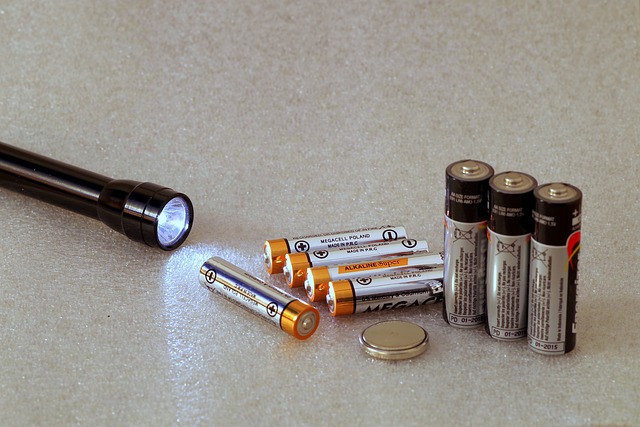Wiring LiPo Batteries in Parallel-Possibility, Result, and Methods
Jan 04, 2020 Pageview:1547
Can LiPo batteries be connected in parallel?
Yes, LiPo batteries can be connected in parallel. Parallel charging LiPo batteries allows one to use a single high-quality charger to charge many LiPo cells at once. This will enable batteries to get more runtimes in their various designated electronic devices while reducing downtime spent to charge them. For your LiPo batteries, you should consider putting them on a parallel charging set up to increase their runtimes and save on time as well.
What happens if you connect LiPo batteries in parallel?
Parallel charging is referred to as a polarizing topic and thus riskier when using it on LiPo batteries since they are prone to errors. Failure to follow the correct steps or skip a single one can result in battery failure or damage.
How do you wire LiPo battery in parallel?
Before wiring or charging your LiPo batteries in parallel, you need to observe the following rules and regulations for your safety and that of the cells.
Take safety precautions
It doesn’t matter whether you may be conducting this experiment in a secluded building, open area or even how you plan on executing the procedure. It would be best if you always took the necessary safety precautions by ensuring that you have a fire extinguisher near you because anything can go wrong from battery failures to thermal runaways that ignite flames. LiPo batteries are not invincible. Also, make sure to carry out the project in a metal/ ammo box when charging to prevent cases of fires from spreading to the environment around.
Check the capacity and Crating
It is never a big deal to charge batteries from different brands and capacities together in parallel. However, one can never be too careful and thus needs to ensure maximum safety. This calls for you, as is recommendable, to charge LiPo batteries of similar specifications as well as capacities and C ratings which are within a reasonable range.
Same cell count
Make sure that the LiPo batteries you intend on charging have the same cell count. This means that you should never charge 3S batteries with 4S. 3S batteries must be charged with 3S and 4S batteries with 4S.
Inspect the voltage
Before charging the batteries n parallel, you should always check the voltage of each cell using a LiPo voltage checker or reader. These will help you identify batteries that shouldn’t be included in the process due to very low voltages and thus allowing you to pick them out.
Avoid charging unhealthy batteries
When charging LiPo batteries, never charge an unhealthy one because of the risks of fires. Such cells should be disposed of appropriately. During parallel charging, deformed batteries can result in an increase in internal resistance within the cells, which in turn significantly spikes the temperatures and causes thermal runaway that leads to fires.
Check on the charge current
It is recommended that you charge your LiPo pack at 1C to be safe. The charge current is generally calculated by multiplying the C rating by the capacity: Current = 1C * Capacity.
Connecting balance leads
When parallel charging LiPo batteries, always use balance leads which is somewhat similar to charging the cells individually. The reason behind doing this is to prevent the intended charger from overcharging a specific battery.
Monitor your batteries while charging
Never leave your LiPo batteries unattended to while charging and especially in parallel. Monitoring the cells allows you to notice peculiar signs that aren’t supposed to be present during charging and that poses enormous risks of danger. Such symptoms include overheating of the cells, swellings, or even crackling at certain times.
Charging the batteries
Ensure you follow these steps to the latter, failure to which could lead to permanent damage to the cells or risks of fires.
1.Connect your parallel board charger
The first step would be to connect your parallel charging board to the designated charger for the procedure. Most of the boards come preinstalled with banana plugs that fit into your charger to keep it still. Remove the cables from your charger and connect the board's wires in their place. Ensure that you connect the terminals appropriately with the positive terminals alone and the negative ones alone as well. Once you’ve completed that task, plug the balance lead from your board into the right connector on your charger.
2.Turn on your charger
Power up your charger and make sure that it turns on in the right way without displaying any errors or warnings.
Firstly, discharge the leads for all batteries then balance them
Connect the cells to the parallel charging board one at a time and ensure you plug in your discharge leads first for every cell after that, plug in the balance cables. Make sure you plug in the balance cables slowly and correctly as it is easy to unintentionally brush the wires by the wrong ports and thus set off sparks. It would help if you were slow and steady, taking your time to connect each balance lead one by one. While the order of the leads isn’t an issue, the orientation of the connector matters a lot so be sure to observe that.
3.Determine the charge rate
A lot of these modern LiPo batteries are capable of accommodating high charge rates but the recommended rate will always stand at 1C. As explained before in the rules and regulations above, you need to calculate the charge rate before charging the cells. If the batteries have different mAh capacities, you need to add them together and divide by 1000.
4.Input your charger settings
Set the charger to the “Balance Charge” option, select the battery type, cell count and recheck this to make sure you have every detail incorrectly. Use the number obtained in the previous step as your charge rating.
5.Start charging the batteries
Once you’ve approved your settings, let the charger start charging and you should always stay close to monitor the process in case anything goes wrong. Note any signs of unordinary occurrences such as overheating because LiPo batteries should never be warmer than their surroundings. They should also never produce any odors.
6.Remove the batteries when charging is complete
Once the charger indicates completion of the charging process, remove the cells as they should all be of the same voltage.
Conclusion
With the right guidelines, parallel charging can be considered the best way to charge multiple cells at once, thereby saving on time while significantly reducing downtimes. However, safety comes first. Always be sure you are safe and ready for the unexpected because parallel charging can be a risky alternative.
- Prev Article: Where does lithium come from-source, working, and cost
- Next Article: Lithium Thionyl Battery-Definition, Explanation and Working
Leave Message
Hottest Categories
-
Hottest Industry News
-
Latest Industry News












